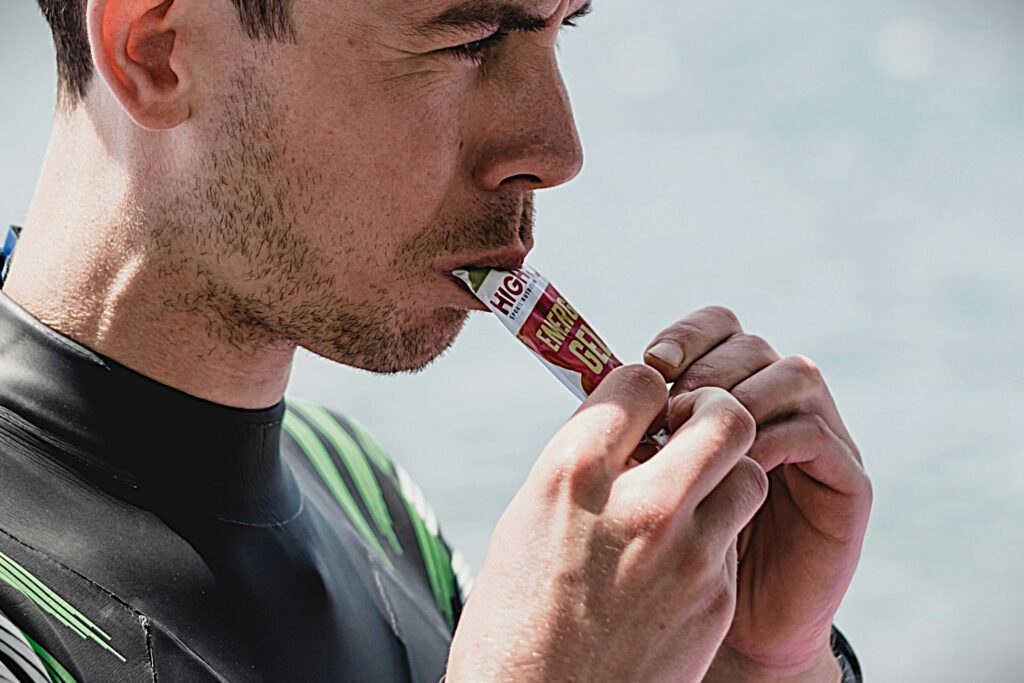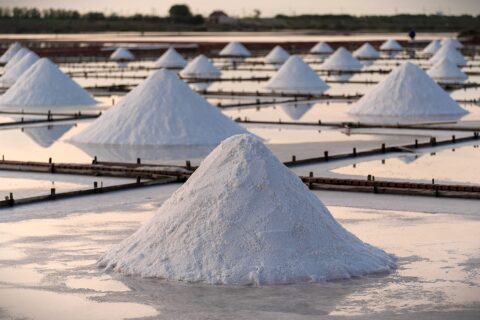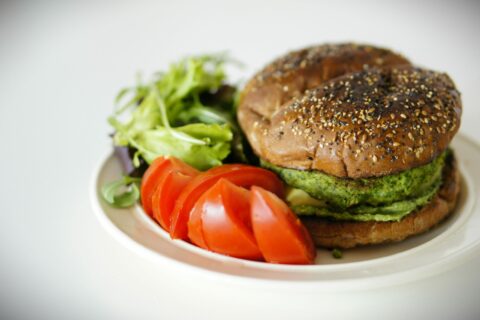Fructose is a type of sugar that occurs naturally in a variety of foods. Often referred to as “fruit sugar”, fructose is commonly found in fruits, honey, and some vegetables. Due to its high level of sweetness, fructose is often used as a sweetener in processed foods, often in the form of chemically pure Crystalline Fructose or High-Fructose Corn Syrup (HFCS).
In this article, we will explore what fructose is, and its different forms, how it compares to other sugars, its sources, and its health effects, providing you with a balanced view on consuming it safely as part of a healthy diet. Additionally, we will delve into the supply chain industry behind fructose, offering insights into its production.
Understanding Fructose – A Natural Sugar
Fructose in Nature
Fructose is a monosaccharide, or simple sugar, that occurs naturally in a variety of foods. It is particularly abundant in fruits, hence why it is called “fruit sugar”. Fructose can also be found in honey and some vegetables, such as corn, carrots and beetroot. Consuming fructose in its natural form, as a part of whole foods, offers benefits due to the fibre, vitamins, and antioxidants that accompany it, which help moderate sugar absorption in the body (Harvard T.H. Chan School of Public Health).
Molecular Structure
Fructose has a unique five-membered ring structure known as a furanose ring, as opposed to glucose’s six-membered pyranose ring. While both sugars share the same chemical formula, their structural arrangement makes fructose sweeter and more soluble in water. This high solubility contributes to its versatility as a sweetener in both natural and industrial applications
Fructose Metabolism
The metabolic pathway of fructose is distinct from that of glucose, primarily involving the liver:
- Direct Metabolism by the Liver: F Fructose is transported to the liver through the bloodstream, where the majority is metabolised. Unlike glucose, which is absorbed and utilised by cells throughout the body, fructose bypasses most tissues and is processed primarily, though not exclusively, by the liver.
- Conversion into Energy or Fat: In the liver, fructose is broken down into intermediates like glyceraldehyde and dihydroxyacetone phosphate. These intermediaries are either:
- Used for immediate energy.
- Stored as glycogen (a storage form of energy in the liver)
- Converted into fat through a process called de novo lipogenesis when consumed in excess. This conversion can contribute to fat accumulation in the liver and other tissues, which may lead to health issues like non-alcoholic fatty liver disease (NAFLD).
What are the Sources of Fructose? – Natural and Processed
Natural Sources
Naturally occurring sources of fructose include fruits, honey, and some vegetables. Consuming fructose from whole foods is generally beneficial due to the fact that these foods provide fibre, vitamins, and antioxidants, which aid in moderating sugar absorption and reducing potential negative effects (Harvard T.H. Chan School of Public Health).
Processed Sources and High-Fructose Corn Syrup (HFCS)
Fructose is also commonly added to processed foods in the form of industrial sweeteners, such as high-fructose corn syrup (HFCS) and isoglucose. These syrups are derived from the enzymatic conversion of glucose in corn or wheat starch and differ primarily in their fructose-to-glucose ratio. For example, HFCS-55 (commonly used in soft drinks) contains approximately 55% fructose and 45% glucose, whereas HFCS-42 (used in baked goods) contains around 42% fructose. Isoglucose, more commonly used in the EU, typically has a lower fructose content. These syrups are widely used in soft drinks, baked goods, confectionary, and many processed snacks due to their low cost and high sweetness. Unlike natural sources of fructose, these added sugars lack fibre and beneficial nutrients, which can contribute to excessive calorie intake and potential health concerns when consumed in large amounts (Centers for Disease Control and Prevention (CDC)).
Liquid and Crystalline Fructose – What are the differences?
Liquid Fructose Definitions
Liquid fructose is a syrup containing fructose, water, and sometimes glucose. It is widely used in beverages, syrups, and sauces due to its easy blending ability. Crystalline fructose, on the other hand, is a highly purified, dry form of fructose, often used in baked goods, powdered drinks, and confectionary products.
Key Differences
- Composition and purity: Liquid fructose contains water and sometimes other sugars, while crystalline fructose is nearly 100% pure fructose.
- Physical Properties: Liquid fructose is ideal for blending into liquids, while crystalline fructose is better suited for dry mixes and products requiring long shelf life.
- Sweetness: Crystalline fructose is sweeter, requiring smaller quantities to achieve the desired flavour.
- Applications: Liquid fructose is commonly used in beverages, while crystalline fructose is preferred in baking and dry mixes.
- Shelf Life: Crystalline fructose has a longer shelf life due to its stability and low moisture content.

What are the Health Effects of Fructose? The Good and The Bad
Potential Benefits of Natural Fructose
Fructose in fruits and other natural sources provide a quick energy release and satisfies the body’s craving for sweetness without the risks that are associated with refined sugars. Whole fruits come with fibre, water, and essential nutrients, which aid in slowing down the absorption of sugar and reduce any potential spikes in blood sugar levels.
Negative Health Effects of Excessive Fructose Consumption
- Weight Gain and Insulin Resistance – Research suggests that high intake of fructose, especially from added sugars, such as HFCS, can lead to weight gain. Fructose unlike glucose, does not stimulate insulin or increase the levels of hormones that promote satiety, resulting in overconsumption (CDC).
- Fatty Liver and Metabolic Syndrome – Excessive fructose intake can lead to a buildup of fat within the liver. This can contribute to non-alcoholic fatty liver disease (NAFLD) and metabolic syndrome. The liver converts fructose into fat when consumed in large amounts, which can lead to liver inflammation and other potential metabolic issues (National Institute of Diabetes and Digestive and Kidney Diseases (NIDDK)).
- Cravings and Hunger – Fructose does not trigger fullness signals as effectively as glucose does. This can potentially lead to increased hunger and cravings. This effect can create a challenge for people to control calorie intake and may contribute to weight gain (National Institutes of Health (NIH)).
- Fructose Intolerance – Some people possess a condition known as fructose malabsorption, where their bodies have difficulty processing fructose, resulting in obtaining digestive symptoms like bloating, gas, diarrhoea. Managing this condition typically involves the person reducing their fructose intake, especially from processed foods (Cleaveland Clinic).
Tips for Managing Fructose Intake
- Choose whole fruits instead of fruit juices or sugary snacks.
- Read food label to identify hidden sources of added sugars, such as “corn syrup”, “agave syrup”, or “fruit juice concentrates”.
- Opt for whole foods and a balanced diet to reduce excessive fructose consumption.
Applications and Benefits of Fructose
Food manufacturers use fructose for more than just sweetness. Its unique chemical properties and flavour-modulating abilities make it a preferred ingredient across a wide range of products. From baked goods to dairy, beverages, and sauces, fructose plays multiple functional roles that influence both taste and texture.
Formulation Versatility
- Beverages: Fructose dissolves quickly in both hot and cold liquids, making it ideal for soft drinks, fruit juices, energy drinks, and ready-to-drink teas. It maintains flavour stability even in acidic environments, boosting shelf life without compromising taste.
- Baked Goods: Its hygroscopic nature helps retain moisture in cookies, cakes, and bread. The result is softer crumb, extended freshness, and better mouthfeel compared to glucose or sucrose.
- Dairy Products: Fructose blends seamlessly into yoghurt, flavoured milk, and frozen desserts. It supports fruit flavouring systems and enhances perceived sweetness without adding bulk.
- Sauces and Condiments: By enhancing sweetness intensity at lower concentrations, fructose balances sourness in tomato sauce, salad dressings, marinades, and BBQ sauces.
- Nutrition Bars and Snacks: It improves flavour masking in protein-heavy formulations and helps bind ingredients by functioning as a humectant and sweetener.
Flavour Enhancement and Sensory Benefits
Fructose ranks higher on the sweetness scale than sucrose, registering approximately 1.2 to 1.8 times sweeter depending on concentration and temperature. This allows lower usage levels to achieve the same sweetness profile, contributing to calorie reduction without sacrificing palatability.
Its perceived sweetness peaks quickly and fades slowly. This property makes fructose effective for enhancing fruity, floral, and mild notes in a wide array of flavours. In low-pH settings, such as citrus-based products, its stability preserves the intended flavour character over time.
Functional Advantages in Processing and Shelf Life
- Hygroscopicity: Fructose attracts and retains moisture, a trait useful in preserving texture and preventing staleness in baked products.
- Low Freezing Point: In frozen goods such as ice cream or sorbet, fructose lowers freeing point, improving texture.
- Browning Effects: Through Maillard reactions, fructose contributes to desirable browning and flavour development during baking and roasting.
- Solubility: Its high solubility facilitates easy dispersion in both dry mixes and liquid products, supporting clear appearances in beverages without sedimentation.
Fructose in Sports
Fructose as a Source of Energy for Athletes
Athletes repeatedly tap into multiple carbohydrate sources to maintain high energy output during prolonged sessions of physical activity. Fructose, in tandem with glucose, extends carbohydrate availability and improves absorption rates in the intestines. This dual-carbohydrate strategy leverages distinct transport mechanisms: glucose uses the sodium-glucose linked transporter 1 (SGLT1), while fructose enters cells via glucose transporter 5 (GLUT5). As a result, combining them can raise total carbohydrate oxidation rates above 1 gram per minute, a threshold typically seen when relying solely on glucose.
Research confirms that ingesting both sugars allows the body to oxidise up to 1.75 grams of carbohydrates per minute, significantly enhancing endurance during events exceeding two hours. This is particularly relevant in endurance sports like marathon running, ultras and triathlons.
Fructose Compared to Other Sugars in Athletic Performance
Athletes often turn to carbohydrates to boost endurance, maintain intensity, and recover faster. But not all sugars act the same way in the body. The glycaemic index (GI) illustrates those differences well. This scale measures how quickly a carbohydrate raises blood glucose levels. Glucose sits high on the GI scale, with a score of 100, rapidly entering the bloodstream and triggering an insulin response. Fructose, with a GI of around 15-25 depending on the measurement, behaves very differently.
Fructose absorption occurs primarily in the small intestine and must be metabolised by the liver before entering circulation. This delayed pathway results in a slower glucose spike but also less immediate insulin release. In endurance sports, this difference creates strategic advantages. When co-ingested with glucose, fructose has been shown to increase carbohydrate absorption rates beyond what glucose alone can achieve.
Harnessing the Benefits of Fructose in Energy Gels and Sports Drinks
Product developers don’t include fructose in sports nutrition for sweetness alone. There’s a physiological reason: blended carbohydrate solutions – usually a mix of glucose (or maltodextrin) and fructose – exploit different intestinal transporters for absorption. Glucose uses the sodium-glucose transporter SGLT1, while fructose relies on GLUT5. By targeting both, these products avoid saturation of a single transports system, which limits uptake and can cause gut discomfort.
- Energy Gels: These often contain a roughly 2:1 ratio of glucose to fructose to maximise absorption without gastrointestinal distress.
- Sports Drinks: Typically designed to deliver around 60-90 grams of carbohydrate per hour, with blended sugars to meet high-energy demands in endurance activities.
- Recovery Shakes: Some formulations include fructose to replenish liver glycogen stores, which glucose alone does not efficiently restore.
Looking beyond absorption, the liver plays a central role in fructose metabolism. While glucose refuels muscles directly, fructose contributes to hepatic glycogen – a critical reserve for maintaining blood sugar and fuelling long-duration exertion. By combining both sugars, athletes support muscle recovery and sustain systemic energy balance more effectively.
Conclusion
Fructose is a natural sugar that, when consumed as a part of whole foods, such as fruits, can be a healthy addition to a balanced diet. However, high consumption of added fructose, especially from processed foods, may result in health issues. By focusing on natural sources of fructose and limiting processed sugars when they will not be metabolised (such as when you are sedentary rather than during intense exercise), you can enjoy the sweetness of fructose while supporting your overall health.

Request a Sample
Frequently Asked Questions (FAQs)
Fructose is generally safe when consumed in its natural form, such as in fruits. However, excessive intake from added sugars, especially in processed foods, can contribute to health issues like weight gain, liver fat accumulation, and metabolic disorders (American Heart Association (AHA)). In sports nutrition, however, fructose (often combined with glucose) can be beneficial for endurance athletes, as it helps maximise carbohydrate absorption and energy availability during prolonged exercise.
Fructose doesn’t cause an immediate spike in blood sugar like glucose, but it can have other long-term metabolic effects if consumed excessively. Unlike glucose, fructose does not stimulate insulin release, which can lead to overconsumption and metabolic strain over time (Healthline).
Whole fruits provide fibre, vitamins, and antioxidants that make them a healthy part of any diet. It is generally not harmful to consume fructose in fruits, due to the fibre content helping to slow down sugar absorption.
Both forms are metabolised similarly; the choice depends on application and portion control.
Fructose intolerance can lead to digestive problems such as bloating, gas, and diarrhoea. Both forms are metabolised similarly; the choice depends on application and portion control.
Excessive intake of fructose from added sugars is associated with weight gain, since it does not stimulate fullness hormones like glucose. Limiting processed foods and focusing on whole foods can help in managing weight effectively (NIDDK).
Fructose offers energy and satisfies sweetness craving when consumed naturally in fruits, making it a healthy party of a balanced diet. In sports nutrition, fructose, especially when combined with glucose, can enhance carbohydrate uptake and improve endurance performance by allowing the body to absorb more fuel during prolonged activity.
High-fructose corn syrup is a sweetener derived from corn starch and contains varying levels of both fructose and glucose. Fructose on the other hand, is a naturally occurring sugar that can be found in fruits, honey, and some vegetables. HFCS is commonly added to processed food and drinks as a cost-effective sweetener.
Fructose is processed mainly in the liver, unlike glucose, which is absorbed directly into the bloodstream and causes an immediate insulin response. This slower pathway means that fructose has a more gradual effect on blood sugar. However, an excessive intake of fructose can still lead to health issues over time.
To limit your fructose intake, one should prioritise the consumption of whole foods, like vegetables, grains, and proteins, over processed foods. Check labels for added sugars, including HFCS, agave, honey, and other fructose-based sweeteners. Sticking to natural sources of fructose, such as whole fruits, can help you avoid excessive intake.
Fructose may increase the levels of hunger hormone ghrelin and doesn’t trigger the same fullness signals as glucose. As a result of this, it can sometimes lead to increased hunger or craving, particularly when it is consumed in large amounts in sweetened drinks and processed foods.
High intake of added fructose, in particular from sugary beverages and processed foods, has been associated with insulin resistance and an increased risk of type 2 diabetes. Consuming fructose from whole foods, however, is not linked to this risk due to the fibre and nutrients that accompany it.




